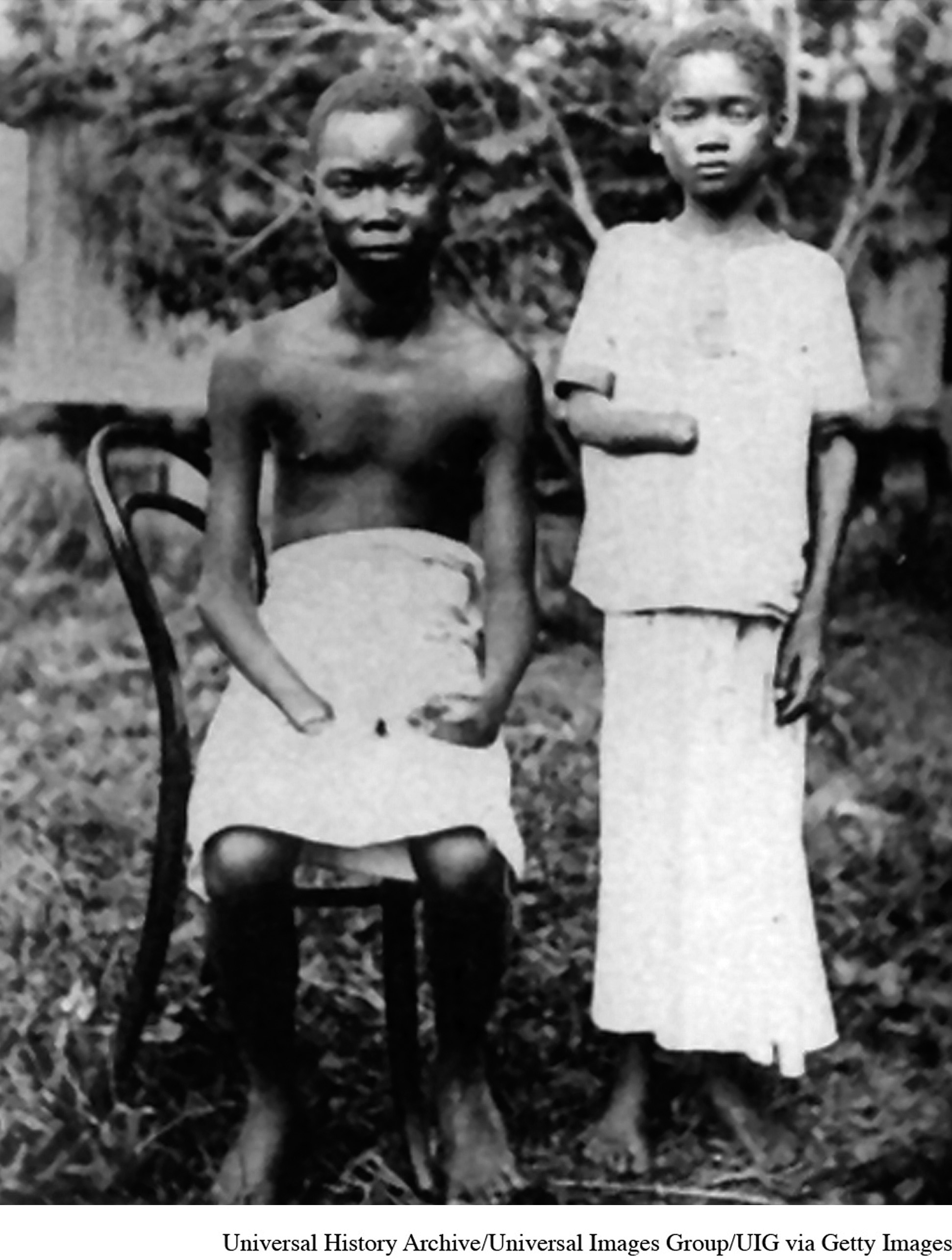Economies of Coercion: Forced Labor and the Power of the State
Many of the new ways of working that emerged during the colonial era derived directly from the demands of the colonial state. The most obvious was required and unpaid labor on public projects, such as building railroads, constructing government buildings, and transporting goods. In French Africa, all “natives” were legally obligated for “statute labor” of ten to twelve days a year, a practice that lasted through 1946. It was much resented. A resident of British West Africa, interviewed in 1996, bitterly recalled this feature of colonial life: “They [British officials] were rude, and they made us work for them a lot. They came to the village and just rounded us up and made us go off and clear the road or carry loads on our heads.”14
Connection
How did the policies of colonial states change the economic lives of their subjects?
The most infamous cruelties of forced labor occurred during the early twentieth century in the Congo Free State, then governed personally by King Leopold II of Belgium. Private companies in the Congo, operating under the authority of the state, forced villagers to collect rubber, which was much in demand for bicycle and automobile tires, with a reign of terror and abuse that cost millions of lives. One refugee from these horrors described the process:
We were always in the forest to find the rubber vines, to go without food, and our women had to give up cultivating the fields and gardens. Then we starved…. We begged the white man to leave us alone, saying we could get no more rubber, but the white men and their soldiers said “Go. You are only beasts yourselves….” When we failed and our rubber was short, the soldiers came to our towns and killed us. Many were shot, some had their ears cut off; others were tied up with ropes round their necks and taken away.15

Eventually such outrages were widely publicized in Europe, where they created a scandal, forcing the Belgian government to take control of the Congo in 1908 and ending Leopold’s reign of terror.
Meanwhile, however, this late nineteenth-
A variation on the theme of forced labor took shape in the so-
On occasion, the forced cultivation of cash crops was successfully resisted. In German East Africa, for example, colonial authorities in the late nineteenth century imposed the cultivation of cotton, which seriously interfered with production of local food crops. Here is how one man remembered the experience:
The cultivation of cotton was done by turns. Every village was allotted days on which to cultivate…. After arriving you all suffered very greatly. Your back and your buttocks were whipped and there was no rising up once you stooped to dig…. And yet he [the German] wanted us to pay him tax. Were we not human beings?18
Such conditions prompted a massive rebellion in 1904–